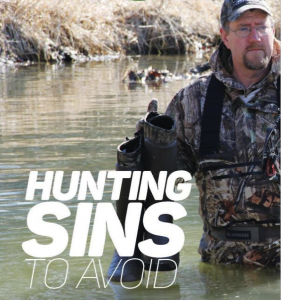
How much is a deer sanctuary on your piece?
I’ve come to firmly believe that the single biggest mistakes hunters make is hunting too much of their ground. If there is a silver bullet, golden key, holy grail to all this, it’s tricking deer into believing they are safe on your hunting grounds. Simply put, you do that by most always hunting low impact stands and most always leaving the high impact areas alone. On a well designed piece of ground, that generally translates to only regularly hunting 5-20% of deer cover, with the majority of my clients being way closer to 5% than 20%.

The way I define sanctuaries is pretty simple. If I don’t believe I can get in and out safely, I designate the area as sanctuary. If it’s an area that isn’t very good for hunting/difficult to hunt, that’s also sanctuary more often than not.
I’m not a purest when it comes to sanctuaries. First off, I’m going to scout them and often do cover improvement projects inside. The idea of never stepping foot inside them, other to retrieve deer, seems like a foolish handicap to me. If you don’t know how deer are utilizing the sanctuaries, how do you setup on their actions most effectively? You can’t. I need to know what they deer are doing inside, how and when (to the best of my abilities/within reason). The only way I can know those things and be sure it offers great protective cover is to scout and work it. I just try to get all that done by the end of early summer.
The other way I’m not a purest is that I’m going to set any truly great stand locations within the sanctuary. I’ll loosen them after ssn, reset and trim the aggressively in spring (need an aggressive trimming so that the shooting lanes are generally still good after all the summer growth occurs) and hope to never hunt them. I don’t WANT to hunt inside the sanctuary. I WANT to get it done from the edges. Because I’m making the deer feel safe, they’re moving more during daylight on my ground and I can generally get it done from the outside.
However, when a buck I want to kill isn’t cooperating and I have reason to believe I can’t/won’t get it done from the outside (or, better put, all intel shows he’s coming from the sanctuary and he’s not leaving until after dark), I want the option of going in after him. I’ll wait until the breeding phase is rocking (up until that point, you really don’t know if rising testosterone will inspire him to leave before dark or not), pick a good-great deer movement day (normal to low temps, no high winds, peak rut to early post rut), get in well before first light and hunt until dark or I kill the buck I’m after, which ever comes first.
I don’t WANT to hunt them. I truly do my best to get it done from the outside. However, if I honestly believe I can’t, I’ll go in 1-2 times a ssn to hunt those stands. To put it in perspective, I don’t hunt them more ssns than I do. It takes discipline. However, if you can stick to it, you have more, calm deer on your ground. In time, your ground is where the neighborhood deer head when pressured. There’s all sorts of advantages to hunting less of your ground, but having the option of every once in a blue moon going in after them is invaluable. By greatly limiting those hunts to next to never, they can be fantastic sits on the rare times they are hunted. It’s the best balance I’ve found.
As a side note, to really make this sing, do your best to manufacture high odds, low impact stands, just inside the timber that hunt like they’re smack dab in the middle of the deer cover. A great example of this is when the crop ground is high and flanked by downward slopes. Often, one can find erosion ditches that start 5-20 yards in off the field edge. When those erosion ditches are too deep and wide to cross, they force deer to the tops and bottoms to get around them (when they aren’t quite deep/wide enough to stop deer crossing them, one can often hinge cut the trees along the cuts, dropping them mostly parallel to the cut, to create a very effective blockade), creating what hunts like a deep woods funnel between the tip of the cut and the field edge. Pinch points separating blocks of deer cover and those kill/staging plots 50-100 yards back in the woods are also great examples of barely being in the deer cover, yet it hunting like you’re in the middle of the action.

